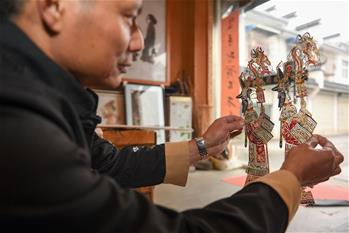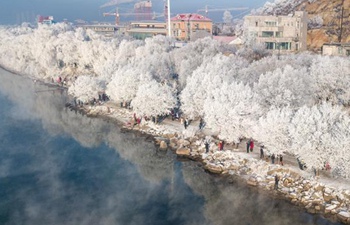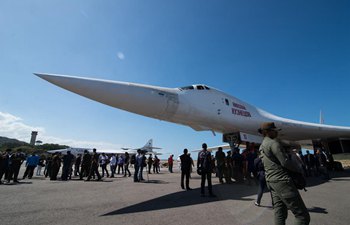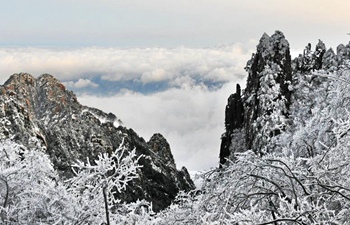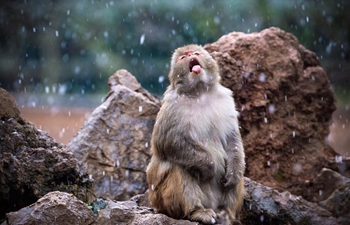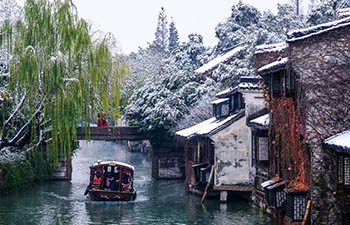BEIJING, Dec. 13 (Xinhua) -- Museums across China held various activities Thursday to commemorate the 300,000 victims of the Nanjing Massacre committed by Japanese invaders during the Second World War.
Japanese troops occupied Nanjing, then China's capital, on Dec. 13, 1937, and began a six-week massacre. Chinese records show that more than 300,000 people -- both unarmed soldiers and civilians -- were brutally murdered and over 20,000 women raped.
In February 2014, China designated Dec. 13 as "National Memorial Day for Nanjing Massacre Victims" to mourn the victims as well as all those killed during the war against Japanese aggression.
Historic museums across the country held memorial services, lectures, and exhibitions Thursday to mark the day and raise people's awareness of the sorrowful past.
In Nanjing, the memorial hall for the victims opened a photography exhibition on Thursday, featuring photos and video taken by John Magee, an American missionary who was stationed in Nanjing during the massacre, and the shots of the city today taken by his grandson Chris Magee.
John Magee secretly shot 105 minutes of film documenting the atrocities committed by the Japanese invaders in 1937. The footage is considered the only film record of the massacre.
Chris Magee revisited places and took pictures of where his grandfather had lived in Nanjing in 2017.
"I walked the city of Nanjing, a city reborn from the ashes and took pictures," said Chris Magee, " I felt the shadows of the past had given way to life and prosperity."
"One records destruction and another describes rebirth. Their works are witnesses of the city's past, present, and future," said Ling Xi, deputy curator of the memorial hall.
In Shenyang, capital of northeast China's Liaoning Province, more than 200 representatives from all walks of life gathered in front of the 9.18 Historical Museum to mourn the victims of the massacre.
Inside the museum, people lit candles and prayed before a pyramid-shaped memorial, and elementary pupils recited poems commemorating the victims.
"I am touched by the activities, and I hope more people can know this part of history," said six-grader Fu Sihan at the museum.
Guo Dachang, nearly in his 70s, also visited the museum. "China has become more powerful after 40 years of reform and opening up, but we should never forget that our peaceful life comes at the price of the martyrs' sacrifice," Guo said.
In Harbin, capital of northeast China's Heilongjiang Province, a museum for local martyrs held a lecture themed on the historical backgrounds and reflections of the National Memorial Day.
Guides in the museum told stories of martyrs to the visitors and a special area was set up for citizens to leave commemorative notes.
In Beijing, people dressed in black gathered at the square outside the Museum of the War of Chinese's People's Resistance Against Japanese Aggression.
After singing along with the national anthem with white chrysanthemums in their hands, the crowd stood in a silent tribute and then entered the museum to present the flowers to the deceased.
The museum features a traditional Chinese painting exhibition by He Baosen depicting the war.
"I hope to use art to raise people's awareness of history, to mourn the deceased compatriots, and to cherish the hard-won peace," He said.





